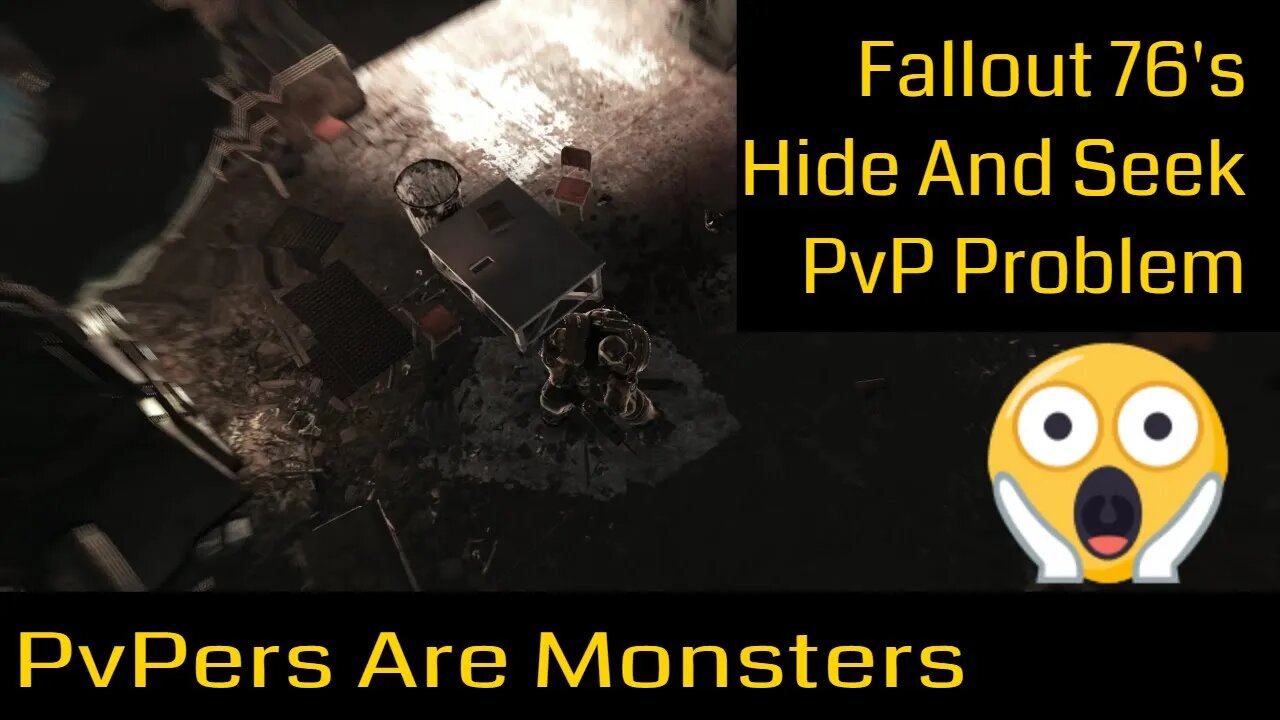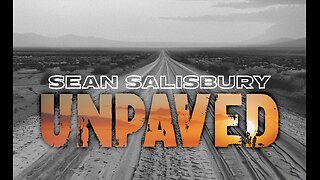Premium Only Content

The Fallout 76 Hide N Seek PvP Problem
Hide-and-seek is a popular children's game in which at least two players (Usually at least three) conceal themselves in a set environment, to be found by one or more seekers. The game is played by one player chosen (designated as being "it") closing their eyes and counting to a predetermined number while the other players hide. After reaching this number, the player who is "it" calls "Ready or not, here I come!" or "Coming, ready or not!" and then attempts to locate all concealed players.
The game can end in one of several ways. the most common way of ending is the player chosen as "it" locates all players; the player found first is the loser and is chosen to be "it" in the next game. The player found last is the winner. Another common variation has the seeker counting at "home base"; the hiders can either remain hidden or they can come out of hiding to race to home base; once they touch it, they are "safe" and cannot be tagged. In Ohio, a hider must yell "free" when he touches base or he can still be tagged out. But if the seeker tags another player before reaching home base, that person becomes "it", or "the seeker".
Different versions of the game are played around the world, under a variety of names.
One variant is called "Sardines", in which only one person hides and the others must find them, hiding with them when they do so. The hiding places become progressively more cramped, like sardines in a tin. The last person to find the hiding group is the loser, and becomes the hider for the next round. A. M. Burrage calls this version of the game "Smee" in his 1931 ghost story of the same name.
Hide and Seek (painting 1881)
In some versions of the game, after the first hider is caught or if no other players can be found over a period of time, the seeker calls out a previously-agreed phrase (such as "Olly olly oxen free", or "All in, All in, Everybody out there all in free") to signal the other hiders to return to base for the next round. In another version, when hiders are caught they help the seeker locate the remaining hiders.
In one variant, once all hiders have been located, the game then becomes a game of tag where the seeker chases after all the other players and the first person tagged becomes the seeker for the next round.
In another, the hiders who are found help the seeker track down the remaining hiders, but the first person to be found becomes the next seeker.
In another variant the game is called "Chase". It is team-based and plays only after dusk. Two teams—the hiders and the seekers—are each composed of two or more players. There is a central home base (a.k.a safe) from which the seekers count and hiders must return to without being tagged by a seeker in order to be considered "free" to hide again. All players dress in black. No flashlights are allowed. The only lights in the playing field are those from street lamps or natural lighting. The goal is for the hiders to take advantage of camouflage of the shadows in the surrounding area. The game is meant to be stealth. When a hider is caught—tagged by a seeker—the hider does not get to hide again and must remain on home base. If a hider returns home "free" without being tagged they can hide again in the next round representing their team. When all hiders are caught then the hiders become the seekers and the seekers become the hiders. Hiders cannot leave the boundaries of the playing field or else are immediately "caught" or "out" from the round. The origins of this version arose in Greece, New York, in 1976 and had a large following through the end of 1989. Its popularity waned in the 1990s as parents began worrying about adolescent safety at night.
In some parts of Australia, the game is called "44 Homes". The hiders hide until they are spotted by the seeker, who chants, "Forty, forty, I see you" (sometimes shortened to "Forty, forty, see you"). Once spotted, the hider must run to "home base" (where the seeker was counting while the other players hid) and touch it before they are "tipped" (tagged, or touched) by the seeker. If tagged, that hider becomes the new seeker.
In Brazil and Russia, when the seeker spots a hider, they both race to the spot where the seeker was originally counting; whoever touches that spot first wins the game.
Hide-and-seek is sometimes played at night in a park, a field, or a house with the lights off.
More recently Hide-and-seek has been adapted to leverage technology to play in confined spaces. An example is an app such as Sherlock Home:Instead of the player hiding, the player hides the phone, and the countdown begins for the seekers to find it. While they search, a voice give them clues and call them to direct them "Over here!" "Not there!". They need to find the device before the time runs out. This approach allows the game to be played in confined spaces.
-
 11:07:18
11:07:18
Lorespade
1 year agoLorespade's Adventure In No Man's Sky
39 -
 21:23
21:23
SLS - Street League Skateboarding
12 days agoLuan Oliveira's Top SLS Moments: 2015
2.51K -
 12:16
12:16
Cowboy Kent Rollins
6 days ago $1.22 earnedFried Onion Burger | Famous Oklahoma Fried Onion Burger Recipe
19.4K6 -
 LIVE
LIVE
Crypto Power Hour
3 hours agoThe Wicked Witch Is Dead, New Leadership At The SEC |EP15
128 watching -
 LIVE
LIVE
Jeff Ahern
49 minutes agoNever Woke Wednesday with Jeff Ahern
78 watching -
 44:55
44:55
BEK TV
16 hours agoTARIFFS, TECH TYRANNY, AND PROPHECY: CLAY CLARK EXPOSES THE GLOBAL RESET NO ONE IS TALKING ABOUT
3.9K -
 1:20:27
1:20:27
Russell Brand
3 hours agoMaha Revolution: RFK Jr. Declares War on Toxic Food and Pharma – SF571
100K24 -

Tucker Carlson
4 hours agoGeorge Friedman Predicts the Next 50 Years of Global Affairs and the Importance of Space Domination
57.1K32 -
 1:01:42
1:01:42
Sean Unpaved
3 hours agoNBA Series Standoff, Draft Day Drama, & Uncle Shay's Shocking Controversy
24.5K -
 1:56:11
1:56:11
The Charlie Kirk Show
3 hours agoWhat's The Matter With Boomers? + Don't Die for Dyes + SCOTUS Showdown | Means, Murtaugh | 4.23.25
42.5K31